Food for Thought! Part II
by: Martha Grimes
The names Martha and Hunter Grimes are well known in the North Country, and especially in Alexandra Bay. Martha was born and raised in Alexandria Bay. During her career as an educator, Martha taught various Primary Level grades at Alexandria Central School. Since retiring, she has been actively involved with the Alexandria Township Historical Society and the Cornwall Brothers Store Museum and its interpretation, in Alexandria Bay, NY.

Martha's husband, Hunter Grimes, was undoubtedly a genuine ‘River Rat’ – a term given to those who spend their lives on, in, beside, or under the River. In 1989, Canadian author Shawn Thompson wrote his book, River Rats: The People of the Thousand Islands; page 68 has the Hunter Grimes story. Hunter died in 2013, and TI Life paid tribute to this gentleman in the September 2015 issue in "Hunter Grimes, A River Loss."
Hunter and his wife Martha have devoted their lives to their community; both have been recognized for their volunteer efforts and leadership.
Food for Thought!
Destiny brought us back to the River after a little over a year, and life resumed as it had been before the great adventure. He transferred to the School of Environmental Science and Forestry at Syracuse University. I accepted a job in our local school district.
It is said for every season, there is a reason. From that point on, our table fare and his recreation followed the seasons. The spring thaw announced the arrival of Bull Heads in Cranberry, Crooked, and later in the season, Mud Creek. Once mainly a local food source, Bull Heads are now served on the menu in many restaurants, and are a popular fundraising event for many organizations. If anyone sharing a Bull Head meal with us, either in our home, or in a restaurant, was squeamish about eating the tail, he welcomed as many as were offered. Perch were also a favorite when fried crisply, served as Poor Man's Shrimp, or as Copycat Crab Cake appetizers.
As toddlers, our children were introduced to frog legs from the Indian River Lakes system. They loved to vocalize froggy “ribbit” sounds, as they hopped the bony drumsticks among mashed potatoes and carrots.

A few years later, he continued to explore undiscovered gastronomical delights when a large snapping turtle made the ultimate sacrifice for savory turtle soup. The turtle was fed tidbits of whatever turtles might enjoy and hopefully cleanse its system while kept in a spring-fed bathtub. The tub was sunk in the ground and did double duty as the icy plunging pool outside our sauna bath. After the addition of savory spices and herbal ingredients to the pot and simmering hours, the soup was served. The rich, creamy bisque did nothing to disguise what resembled rubber bands floating on the surface palatable.
There was an unsuccessful venture into being a "Gentleman Farmer". He had heard of a farmer who was looking for a home for a Billy Goat that had become too aggressive to be pastured with the valuable dairy herd. Pisser, as the goat was named, had been treated by a vet for a chronic urinary tract infection. The surgical procedure involved an incision in the bladder, which allowed urine to continuously drip down the goat's leg.
Pisser was brought to the family homestead to be fattened and eventually added to our freezer. Our kids were delighted that they were allowed to say his name without being chastised. He was fed the best grain Agway had to offer, but quickly went on a hunger strike. Pisser missed his bovine friends and continually escaped his fencing to arrive, standing on his hind legs at our front door and gazing in the windows of the house. Losing weight by the day, he quickly went into the freezer. Experiments with several dinner preparations were not successful. The final recipe was prepared for many hours in the crockpot and taken to a family cook-out as our "mystery" contribution. The kids bubbled over with laughter when they announced that everyone was eating Pisser Stew.
Dinner guests were always prepared for an unusual dining experience and became used to both good and bad surprises. Ample wine and a variety of appetizers enabled all to leave sated. On one occasion, a local fisherman's donation of catfish (maybe a second generation of the River Rat who talked him into the Blue Heron) was accepted as a personal challenge. The rancid odor wafting from this fish on the grill was an ominous warning of what to expect. Always true to his philosophy, small portions were sampled but never made it on the approval scale.
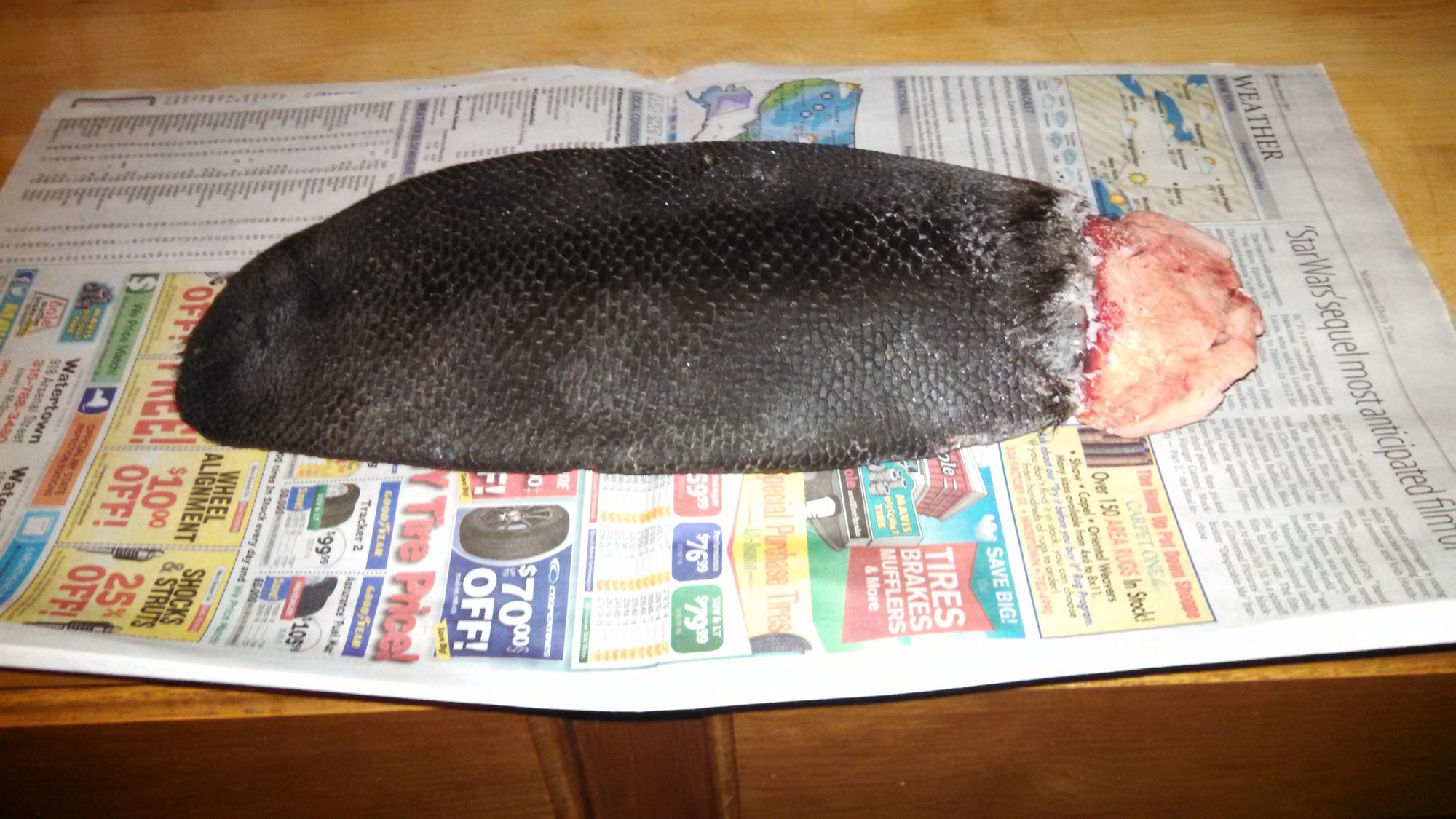
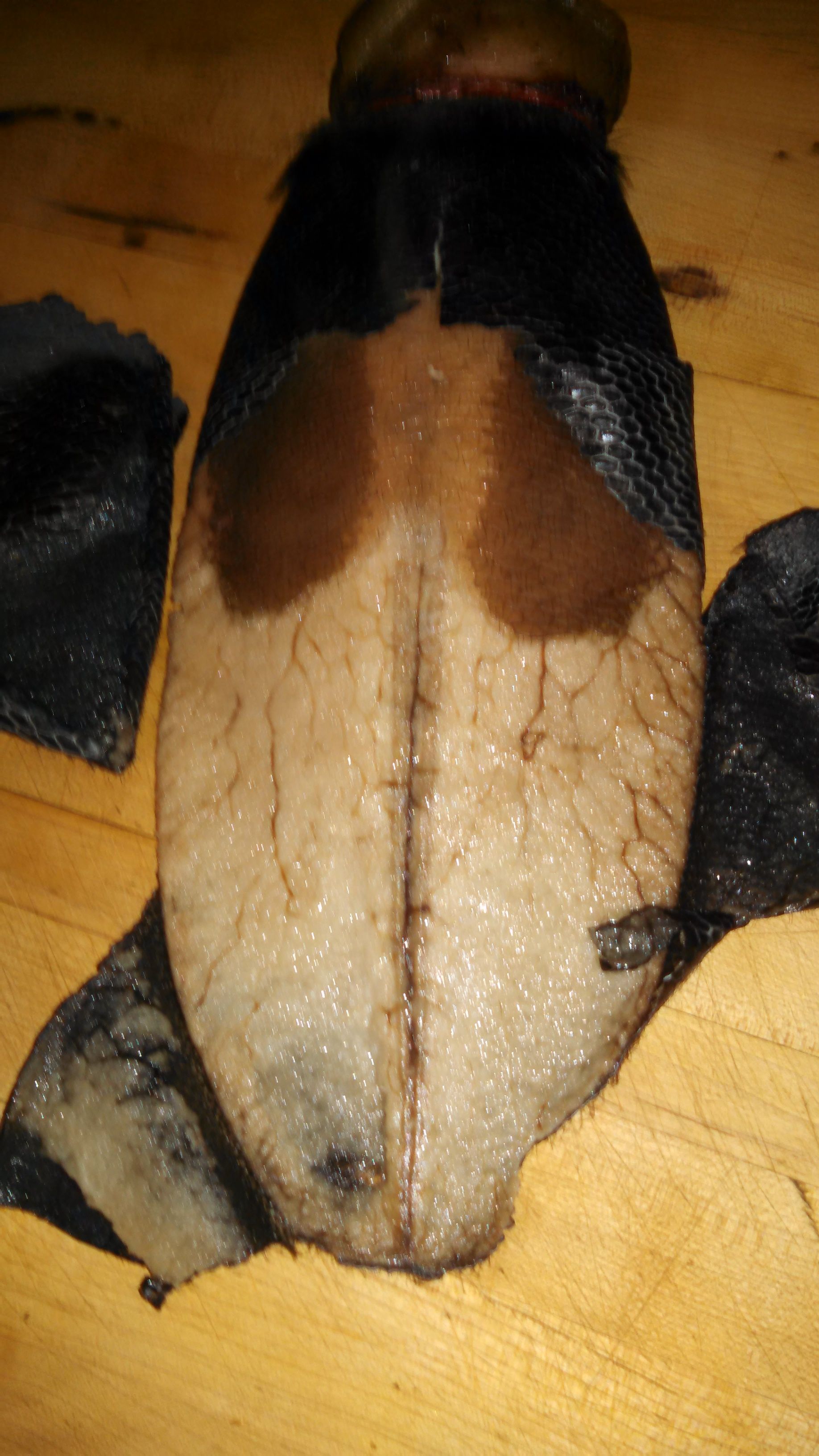
Although he was not a trapper, he managed to bring home muskrats and beaver from those who earned a seasonal income from the furs. His recipe for Beaver Tail Soup is mentioned in “Let's Make Soup . . . and Thoughts on Overlooked Food Sources” and can be found in the January 13, 2015 issue of TI Life Magazine. Beaver, like the Muskrat, is an herbivore. The meat can be prepared in various enjoyable ways; as a roast, fried, or pan-seared, and served on skewers as Spiedies. One of our Chesapeake Bay Retrievers managed to snatch a savory beaver roast from the outside grill, and having a bit of an attitude, dared anyone to take it away. No one tried. A trapper friend presented us with a gift of matching beaver pelt hats he had trapped and tanned himself.
Fly fishing on the St. Regis River with his grandfather was a ritual of passage for him. The marriage of grace in casting the line of the fly rod and the serenity of a day shared with his role mode, out-weighed the outcome of the experience. If the day rewarded the pair with a Brook Trout, his grandmother completed the ceremony by preparing the catch as only she could do.

Fishing for Bass, Perch, Walleye, and even Muskies on the St. Lawrence River were all enjoyable pastimes, but his favorite challenge was the mighty Northern Pike. Cleaning a Northern Pike and successfully removing the Y Bones is an acquired skill for many fishermen. Some prefer not to fish for them for this reason. An early moose hunting trip to Newfoundland led to the discovery that the native guides considered the Northern Pike a trash fish and could not be bothered to fish for them due to the skill needed to clean and prepare them for the table. A quick lesson by an expert from Northern New York opened their eyes to this abundant food source. [Be sure to visit the Cornwall Brothers Store Museum in Alexandria Bay and see the video: How to Clean a Northern Pike in the Families of the River: A Cast of Characters.]
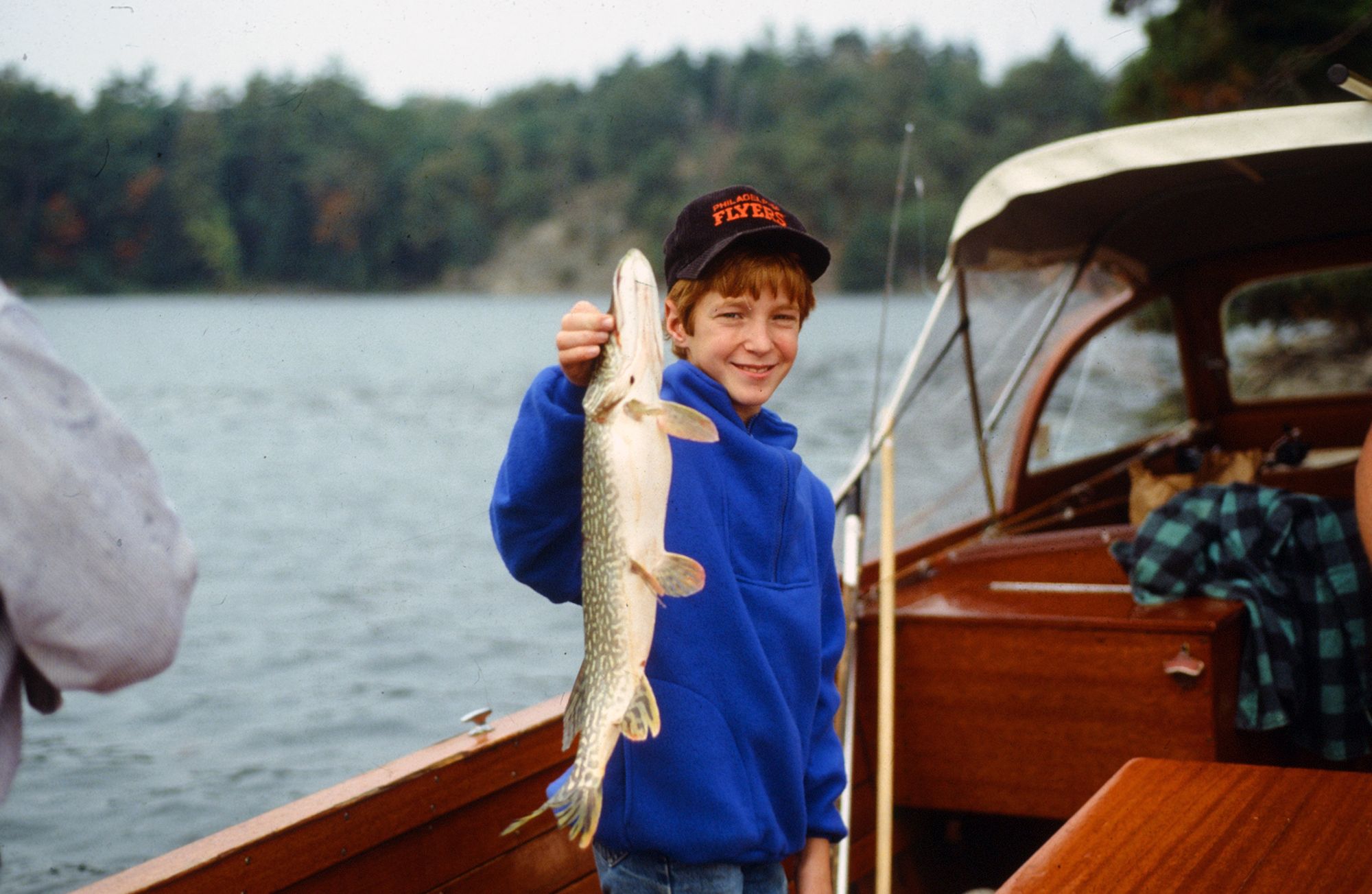
Whether grilled, poached, or fried in bacon drippings, as the fishing guides do, this is a delicious entree'. The family version of surf and turf often shared with guests, featured grilled pike accompanied by moose, caribou, or venison steaks. Another favorite recipe featured pike with oyster dressing wrapped in bacon strips and seared inside foil on the grill. Most fishing guides and River Rats prefer pike in their fish chowder. As always, the gourmet had to explore all possibilities with this fish. Sashimi was tolerable but not experimented further with after the Mercury contamination scare. An experiment with roe to make St. Lawrence River Caviar was sampled by most of our guests, but again, did not win any Michelin Culinary Awards and was struck from the menu.

Every game season that opened, be it fishing, duck hunting, or deer hunting, was anticipated with detail for the tradition. There was always a need for new equipment, procuring the license, picking the right location, and hoping someone else did not lay claim to it first. Frequently, there might be the chance that a new rod, boat, or gun was required.
Early Fall brought the woods near our home to life. A twenty-minute walk could usually be rewarded by a pheasant, partridge, grouse, or turkey. Upon the birth of his namesake, our arrival home was celebrated by his preparation of a roasted woodcock, a mere morsel of delicate meat, and a toast of champagne. The gift package also included a new Honda hatchback to replace the cumbersome, bare-bones Land Rover needed for carting around two small children.
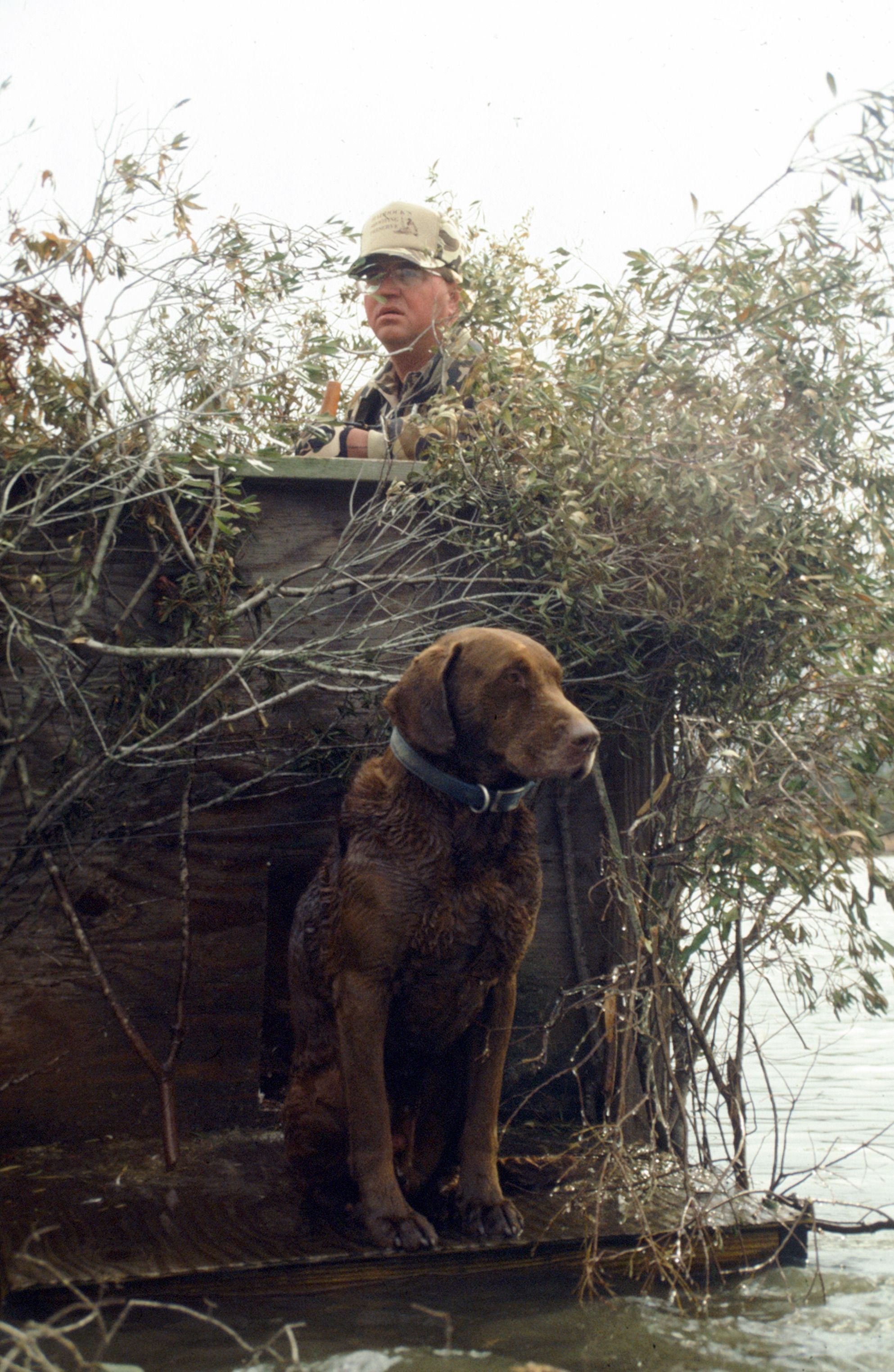
The weather on opening day of duck hunting season was always unpredictable. Temperatures could range anywhere from 30 degrees with frost to a sweltering 80-degree Indian Summer reprieve from the fast-approaching winter months.
Most duck hunting expeditions included several of his childhood friends. One that stands out took place on a day when questionable weather on a pre-dawn departure turned into blizzard conditions. His hunting partner of the day wisely chose to be put ashore very soon into the adventure of the trip to Tidd Rock and was successful in hitching a ride home. How many rough looking men, walking down a highway carrying a shot gun, would be picked up by the benevolent driver today?
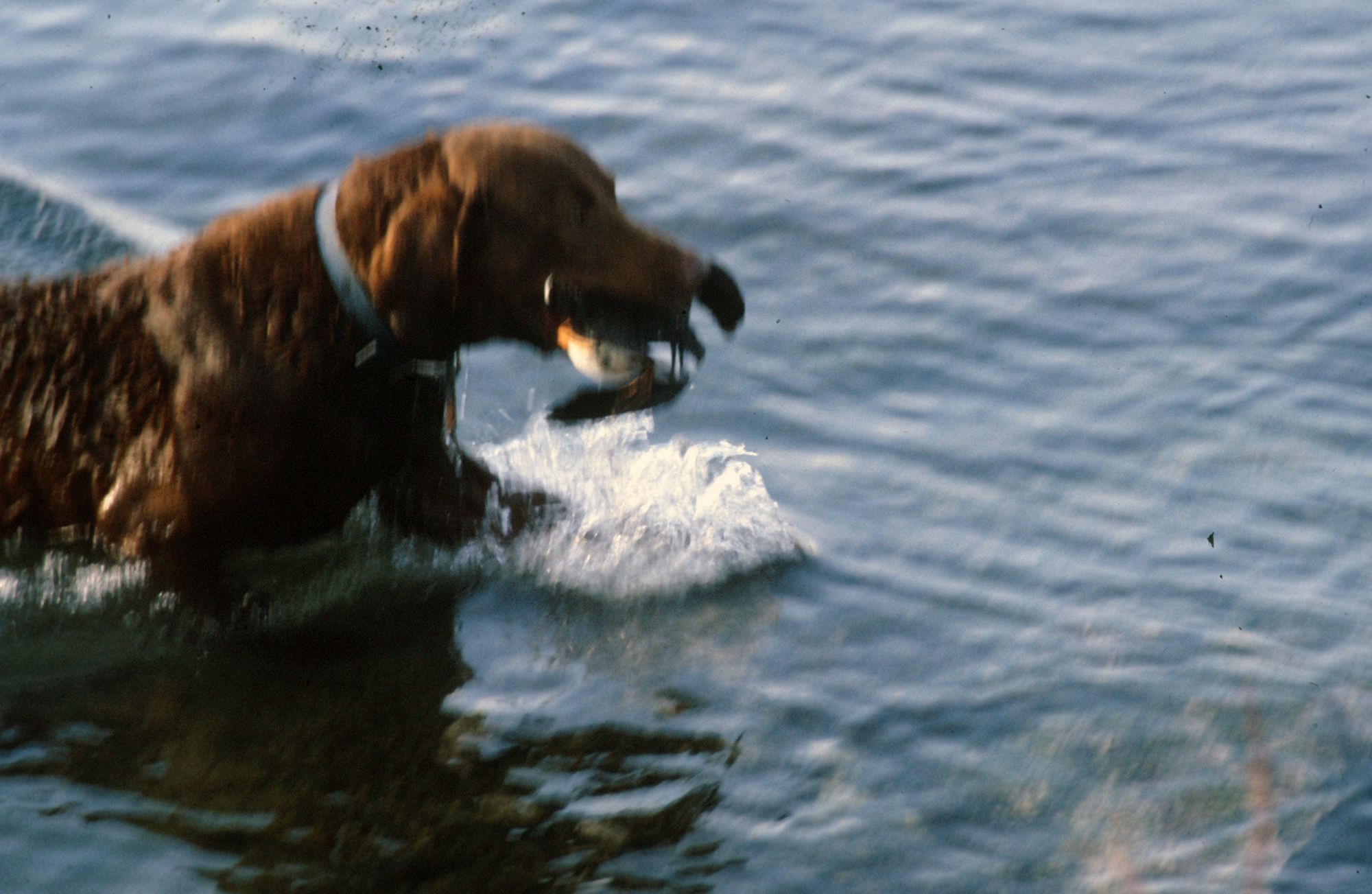
Another his-and-her hunting experience took place with our first Chesapeake Bay Retriever, Can, (a.k.a. St. Lawrence River Canvas Back), during hunting season of 1973. The decoys were set, we shared a thermos of coffee, and waited for the sun to rise. All went according to plan. Birds flared and set in the decoys. Shots were fired, and the dog responded to hand signals to retrieve his prize. Can also discovered a wounded bird in the cattails, not recovered by a previous hunter. My reaction to the sight and smell heralded the arrival of our daughter seven months later.
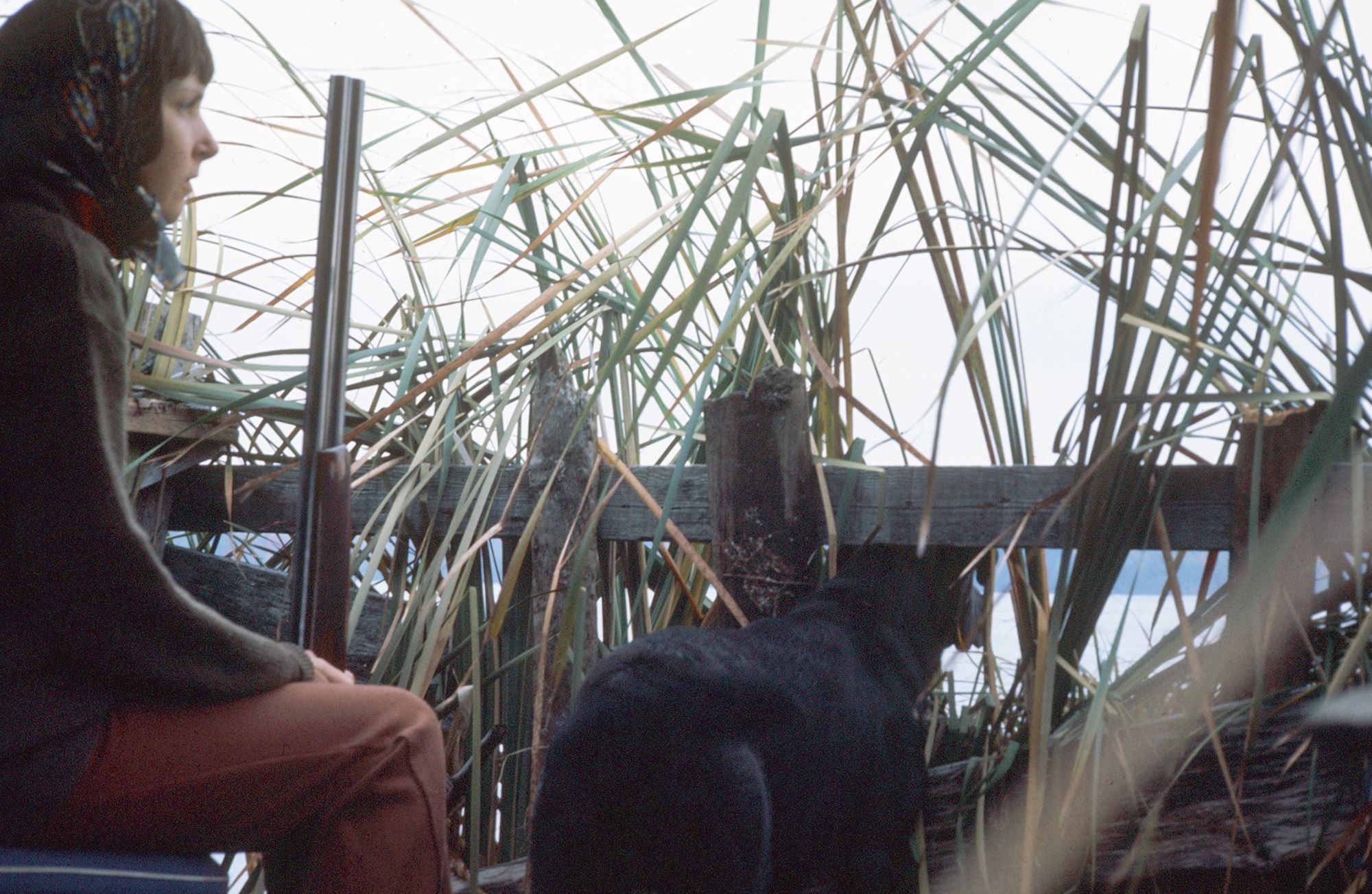
I was given my chance to redeem myself as a duck hunter on an overnight visit to Ice Island, a location that lies in the teeth of the elements under the best of weather conditions. We arrived at dusk with our supplies for dinner and breakfast. The unused hunting camp was impossible to enter, as a swath of spider webs had hermetically sealed the door. My arachnophobia kicked in when a hunting knife had to be used to slice through the web and gain entrance to our overnight accommodations. The old Navy sleeping bag was called into service once again, to accommodate both of us on the single plank platform that served as a bed. It was all down-hill from there. The coziness of two people sharing a one-man sleeping bag was lost during an endless, sleepless, night for both of us. My imagination ran wild with images of what was lurking in the dark. There were screams, elbows in the ribs, and much whimpering under the covers. We both welcomed the dawn. The sun rose to a miserably rainy, cold day. Few birds were flying. The decoy rig became hopelessly tangled, requiring him to wade chest high in the frigid water to retrieve it. When the day showed no promise of improving, the decoys were picked up and we headed for home. From that day on I was not invited to join the hunt, and I didn't challenge the decision.
Preparations for the opening day of White Tail deer season was a complicated affair. Sighting in guns, inventories of ammunition, and inspecting the tree stand were only a few of the chores. Hunting boots and the hunting wardrobe would be dictated by the location of the hunt, predicted weather conditions, and nostalgia for wearing some of the same clothing in which his grandfather had traipsed through the Adirondacks for many years on the same quest; food for the family table. Rising before daylight, the traditional breakfast menu included marinated duck breasts and fried eggs, topped with pickle relish. If the hunt was successful, liver and onions headlined the dinner menu, which was always shared with friends and family. Venison was prepared as roasts, steaks, tenderloin, stews, and even mincemeat for pies. The tallow on the rib cage served as a frequently visited feeding station for the local birds during the winter months.
The provider sometimes ventured into other venues, in pursuit of culinary exploration. Adventures further afield into northern Canada and Newfoundland for moose and caribou satisfied his quest ten-fold, in the reward of countless meals of lean red meat and endless recipes to explore. His presentation of Steak Tartare made with moose tenderloin was equal to the Chez Piggy classic.

Future travels into unknown territory provided opportunities to sample alligator, bison, and reindeer. Visits to the Caribbean and prolonged stays in Puerto Rico introduced us to barracuda, langosta, conch, and goat, along with every delectable ocean fish headlining the menus of local restaurants.
He became the acolyte of local fishermen who engaged in nocturnal spearfishing and sold their catch to local restaurants. Harvesting the local natural resources and venturing into unknown territories to explore challenging opportunities was his passion. As a family, we shared the rewards of his inquisitive mind and quest for adventure on the horizon.
End Part II, See Part I in the Volume 16, Issue 3, March 2021.
By Martha Grimes
Martha Grimes is a storyteller from Alexandria Bay. This piece allows her to tell her story of life with a real River Rat, her husband, but also how their lives revolved around the St. Lawrence River valley's ecosystem which offers a "bounty of food sources to delight the adventurous gastronome."


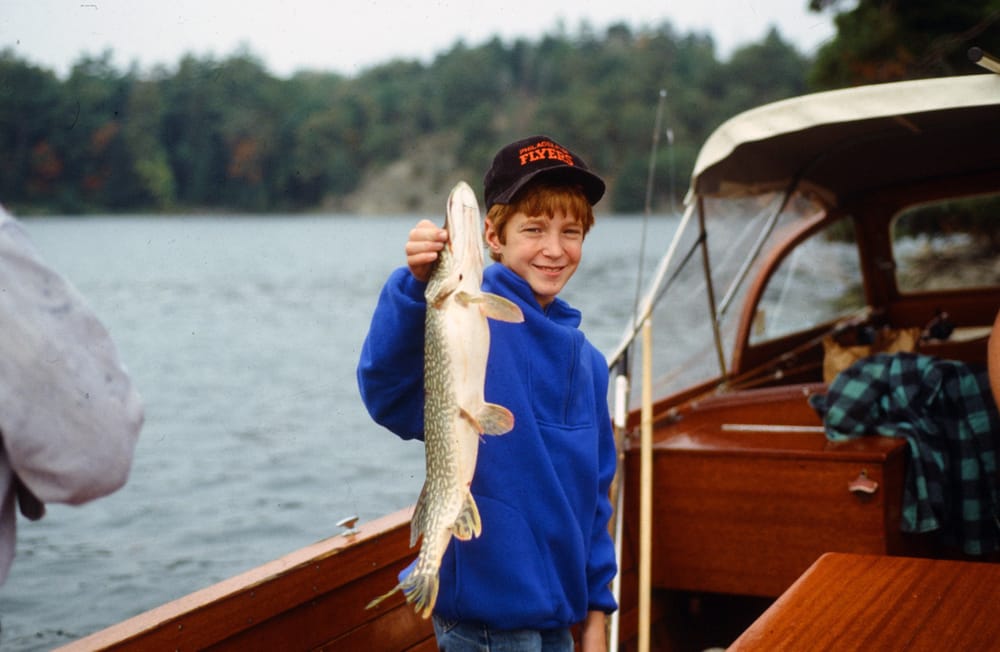



Please click here if you are unable to post your comment.